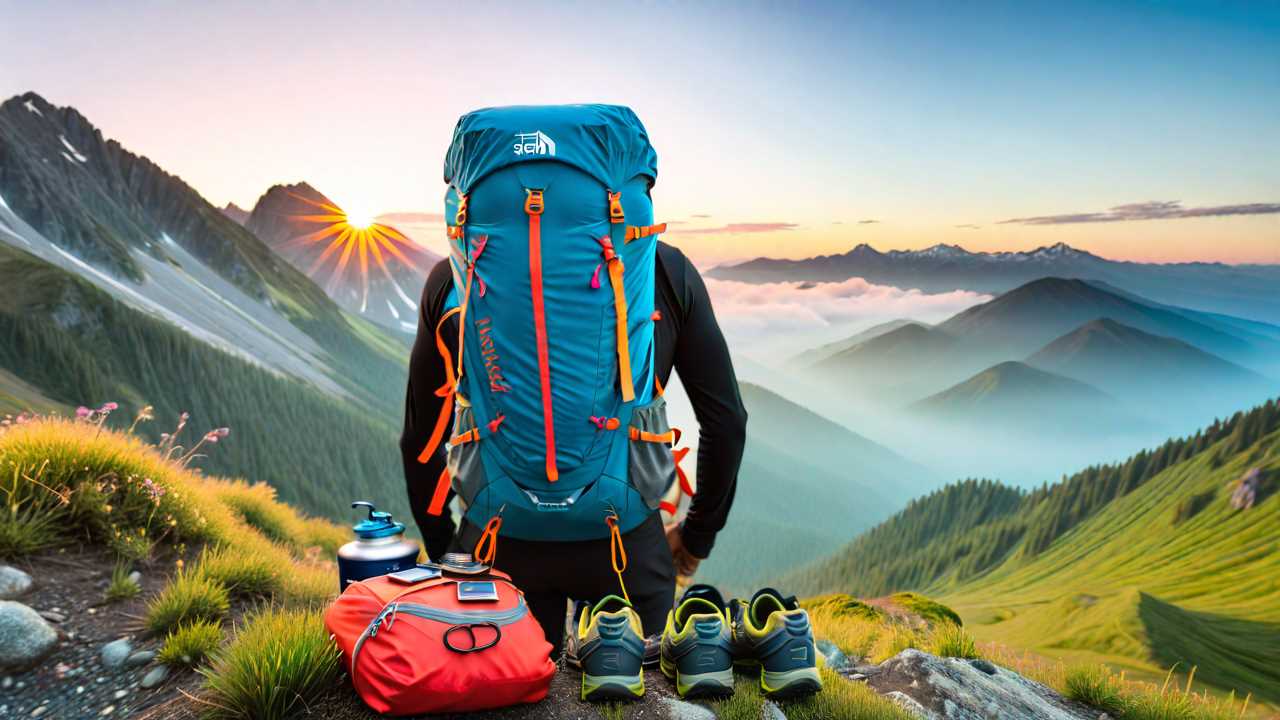
As you lace up your trail running shoes for an upcoming adventure, the question of what to pack may cross your mind. Ensuring you have the right gear can make all the difference in your experience on the trails. From essential items like proper footwear and hydration to safety gear and additional accessories, each item plays an important role in your preparedness. But what about those unexpected situations or challenges that may arise? Stay tuned to discover the key items that could be the difference between a smooth trail run and a potential setback.
When embarking on a trail running adventure, selecting the appropriate footwear is crucial for peak performance and comfort. The right shoes can make all the difference in your experience on the trails.
Look for trail running shoes that offer good traction, stability, and protection. A durable outsole with deep lugs will provide the grip you need on varying terrains, while features like a rock plate can shield your feet from sharp rocks and roots.
Opt for shoes that offer a snug fit to prevent blisters and guarantee stability on uneven surfaces. Take into account the terrain you'll be running on - for technical trails, a more protective shoe with added stability might be necessary, while lighter shoes are suitable for smoother paths.
Keep in mind that comfort is key; test different brands and models to find what works best for your feet.
Investing in quality trail running shoes is investing in your performance and enjoyment on the trails. Choose wisely, break them in before your adventure, and get ready to conquer those rugged paths with confidence.
Hydration and Nutrition
For peak performance on your trail running adventure, maintaining proper hydration and nutrition is essential to fuel your body and sustain your energy levels throughout your journey.
Water is your best friend on the trails. Carry a hydration pack or water bottle to stay hydrated. Aim to drink water regularly, even if you don't feel thirsty, to prevent dehydration. Additionally, pack some electrolyte tablets or sports drinks to replenish the minerals lost through sweat and to keep your energy levels up.
When it comes to nutrition, opt for lightweight, energy-dense snacks like energy bars, nuts, or dried fruits. These snacks provide a quick energy boost without weighing you down. Remember to eat before you feel hungry to keep your energy levels stable. Refuel with small, frequent snacks rather than heavy meals.
Experiment with different snacks during your training runs to see what works best for you on race day. By staying hydrated and fueling your body properly, you'll be ready to conquer any trail that comes your way.
Safety and First Aid
Ensure your safety on the trails by packing a comprehensive first aid kit containing essential supplies for addressing common injuries and emergencies. When trail running, it's vital to be prepared for any mishaps that might occur. Your first aid kit should include items like adhesive bandages, gauze pads, antiseptic wipes, blister pads, adhesive tape, pain relievers, and any personal medications you may need. Additionally, consider packing items like a compact emergency blanket, a whistle, and a multi-tool for unexpected situations.
Knowing how to use the items in your first aid kit is just as crucial. Take the time to familiarize yourself with basic first aid practices, such as treating cuts, scrapes, blisters, and sprains. Being prepared and knowledgeable can make a significant difference in handling emergencies effectively.
Additional Gear
Include key items like a hydration pack, trail running shoes, and a lightweight windbreaker in your gear selection for a successful trail running adventure.
Along with these essentials, there are a few additional gear pieces that can enhance your experience on the trails. Consider packing gaiters to keep debris out of your shoes and protect your ankles. These simple yet effective covers can make a significant difference in your comfort level during the run.
A hat or cap is also essential to shield your face from the sun and help maintain your focus by keeping sweat out of your eyes. Additionally, don't forget a lightweight and breathable running hat to keep you cool and protected.
To conclude, a good pair of sunglasses can protect your eyes from UV rays and reduce glare, allowing you to see the trail clearly. By including these additional gear items in your packing list, you'll be well-prepared for a fantastic trail running adventure.
Frequently Asked Questions
Can I Bring My Dog on a Trail Running Adventure?
Bringing your furry companion on a trail running adventure can be a fantastic experience. Just make sure your dog is fit, well-trained, and will be comfortable with the terrain and conditions you'll encounter.
Should I Pack Sunscreen for a Trail Run?
Don't forget sunscreen for your trail run. Protect your skin from harmful UV rays. Look for sweat-resistant options to stay protected during your adventure. Remember, skin safety is as vital as hydration!
Are Trail Running Poles Necessary for Beginners?
Certainly, for beginners, trail running poles can provide stability, especially on challenging terrains. Consider choosing collapsible poles that are lightweight and easily stowed away when not in use. Practice using them before hitting the trails for maximum benefit.
How Do I Prepare for Running in Different Weather Conditions?
To prepare for running in different weather conditions, always check the forecast before heading out. Dress in layers for versatility, wear moisture-wicking fabrics, pack a lightweight waterproof jacket, and bring extra nutrition and hydration for longer runs.
Is It Safe to Listen to Music While Trail Running?
Listening to music can elevate your trail running experience, but safety comes first. Choose earphones that allow you to stay aware of your surroundings. Keep the volume low to hear any potential hazards. Enjoy your run safely!
 SportsHollywoodLifestyleFashionHome & GardenTrendsPrivacy PolicyTerms And Conditions
SportsHollywoodLifestyleFashionHome & GardenTrendsPrivacy PolicyTerms And Conditions
